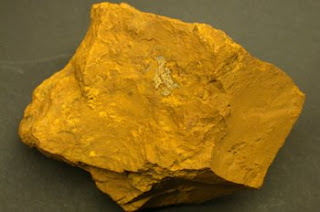 In the picture we see briefly the two processes.
In the picture we see briefly the two processes.
1. Blast furnace .
1.1 blast furnace raw material
The raw material consists of iron ore (60%), coking coal (30%) and flux (10%) , is inserted through the top.
Iron ore: undergoes a preliminary treatment, consisting of crushing and grinding the ore to separate the useful part (ore) of unusable (rocks, limestone, silica, etc.) constitutes bargain.
Coal Coke created artificially from coal. Its mission is:
- Produce, the heat needed to melt the ore and generate the chemical reactions necessary for the iron oxide becomes iron .
- support the weight of the raw material is not crushed, so you can burn at the bottom and leaving the gases to the top.
Flux: lime (provided that the mineral composition having acid), whose mission is:
- Reacting to bargain that may remain, dragging the top, and forming the slag.
- Download the melting point of the bargain for the slag is liquid.
1.2 blast furnace operation
Once on, it's working until it's ininterrupidamente require repair.
As you enter the load, it goes down and its temperature rises  'm up to the bosh , where the temperature is about 1650 º C sufficient for the ore transformed into droplets of iron and deposited in the crucible .
'm up to the bosh , where the temperature is about 1650 º C sufficient for the ore transformed into droplets of iron and deposited in the crucible .
The flux reacts with gangue forming slag, which floats on the molten iron. On one hole, mustache or runner slag is removed every two hours. This slag used in the manufacture of cement, insulation terminco, etc.
periodically opens the runner iron and liquid iron is extracted from the crucible . The liquid iron is called pig iron and iron first merger and contains many impurities and excess carbon, so it has no application.
Almost all of this iron into steel by the LD procedure converter or, sometimes, special molds solidifies, forming ingots.
Surrounding the oven, at the height of bosh, is the wind ring, which draws hot air is introduced into the oven.
1.3 transformation of pig iron in steel: converter
The iron have excess impurities that makes it too fragile and unsuitable for the manufacture of industrial parts. The solution is to eliminate most of these impurities in the refining furnace, the most used is called a converter or preceding LD.
transport from the oven to ale converter is done by train, called torpedoes.
Raw converter LD:
- Pig liquid, and sometimes small amounts of scrap.
- flux, which reacts with the impurities and form slag.
- alloys, which improve the properties of steel.
converter Features:
-Inside is lined with refractory brick-
by batch production is usually around 300 tonnes of high quality steel.
"Each batch usually lasts approx. an hour.
converter operation:
"You tilt the furnace and pig iron is added , flux and sometimes the scrap.
-vertical and is placed down the lance to inject oxygen into the molten metal, so the impurities are burned.
and He leans out the scum floating in steel.
-steel is poured over the spoon and add ferroalloys and carbon.
2. electric oven.
2.1 Obtaining scrap steel through
The most important parts are:
• electrical transformer. Converts the voltage to 900 V and transforms alternating current into direct current continuous.
• Flexible cables. conduct electricity to the electrodes .
• Brazos electrodes. They allow electrodes approaching or moving away from the junk
to jump the arc.
• Securing electrodes.
• Porch with hydraulic arms. Allows remove and replace the lid of the oven
to introduce the raw material.
• Venting chilled. Drive smoke through a filter, removing suspended particles.
• oscillating structure. to tilt the furnace to remove the molten steel. It has a hydraulic dump device.
electric oven
2.2 electric furnace raw materials
- Scrap not take other non-ferrous metals such as copper, aluminum, etc..
- flux (limestone).
- alloys, eg, Ni, Cr, Mo, etc. To manufacture special steels.
2.3 features an electric oven.
-Inside is lined with firebrick.
-Inside, temperatures reach up to 3 500 ° C, which is very easy to not only cast iron alloy, but any person whose melting point is high, such as tungsten, tantalum, etc..
-loading kiln is about 100 tons.
"Each batch takes about 50 minutes.
2.4 oven operation.
1. the lid is removed and fed the junk and flux.
2. closes the oven and close the electrodes to the scrap , to begin to melt.
3. When melted, oxygen is injected to eliminate impurities.
4. You tilt the oven and remove the scum . After you add the carbon and ferro and continues heating until dissolved and standardize the composition of the bath.
5. Leans oven and pour the steel into the ladle, which leads to the molding area
 Unalloyed
Unalloyed 















